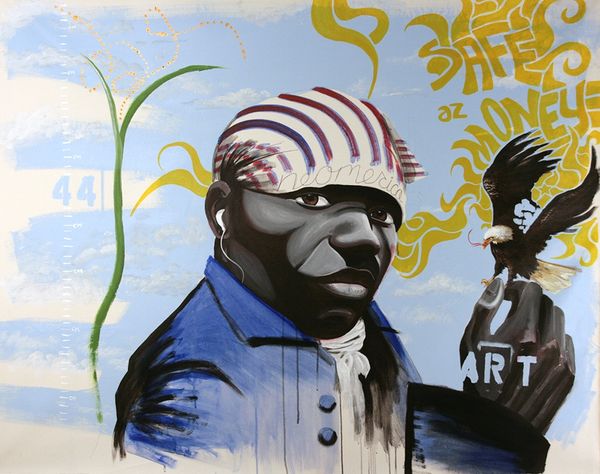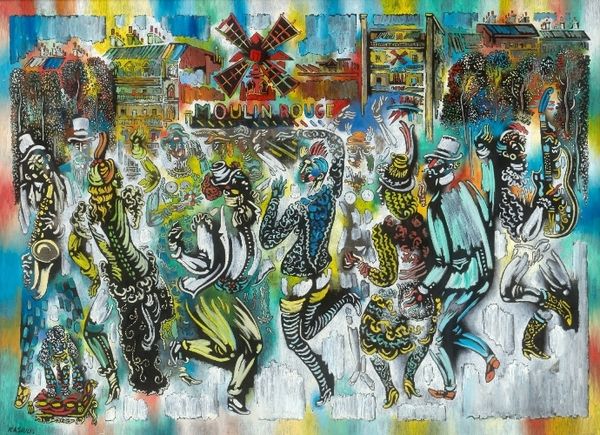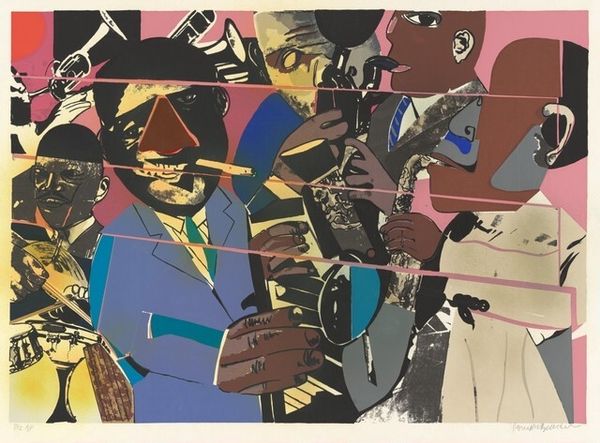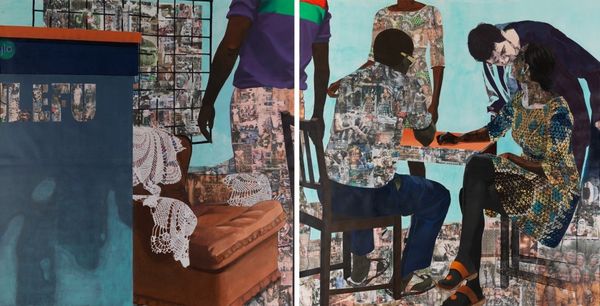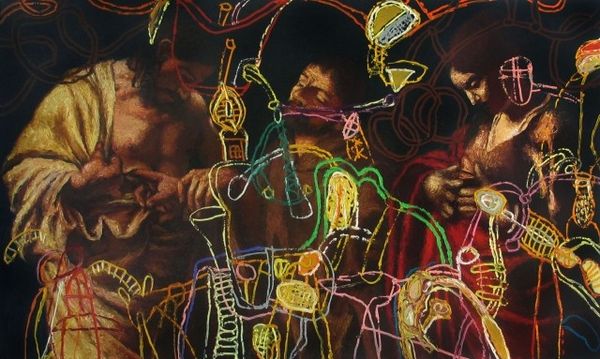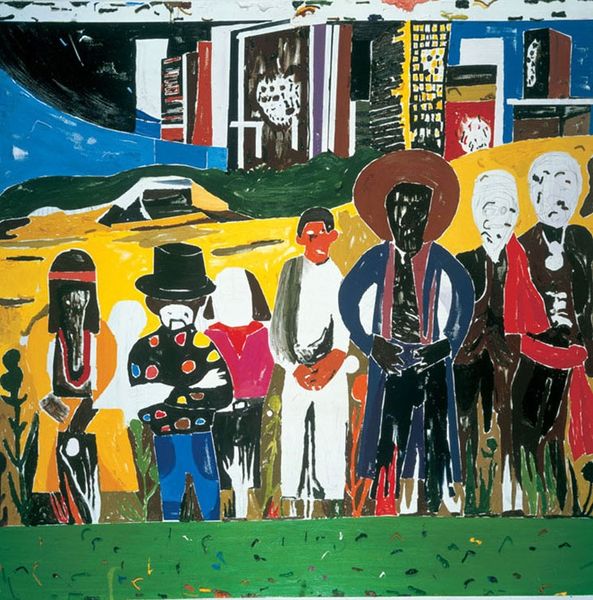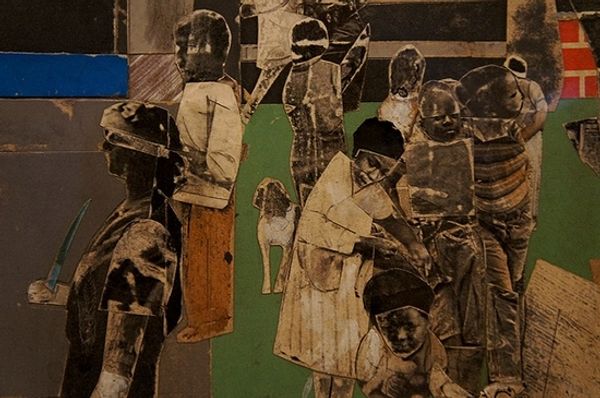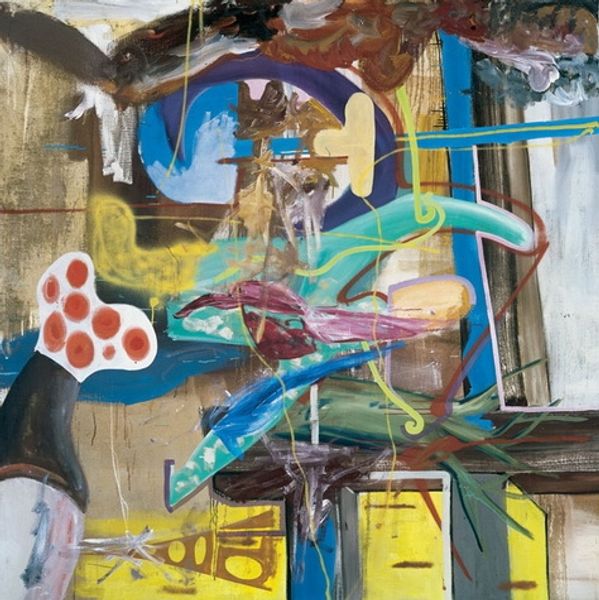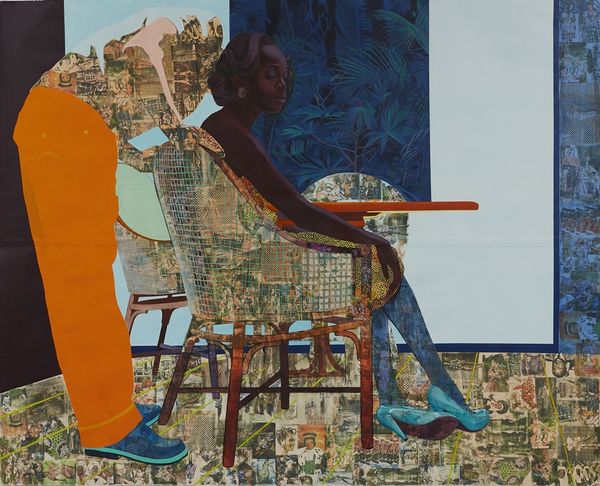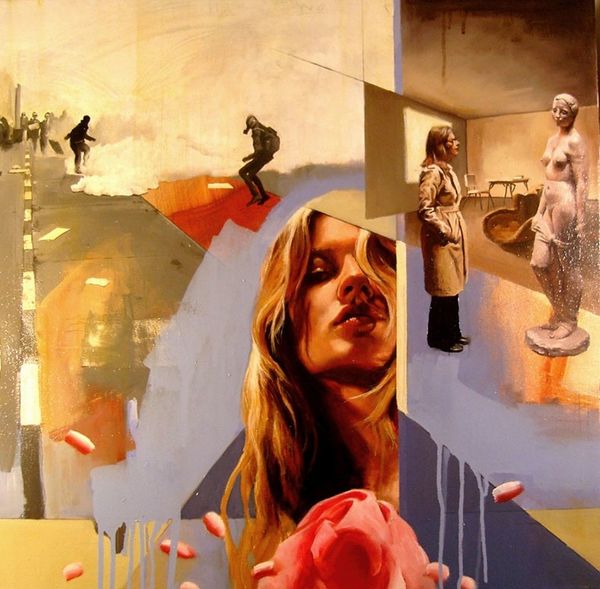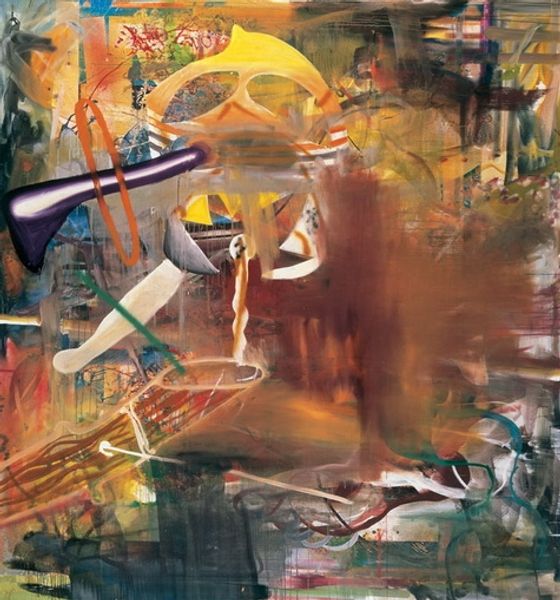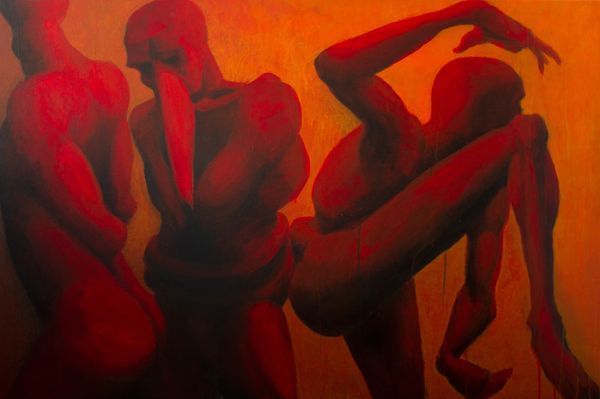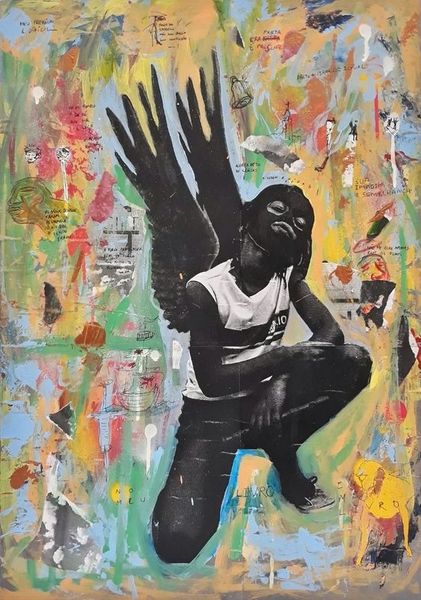
mixed-media, acrylic-paint
#
portrait
#
graffiti
#
figurative
#
mixed-media
#
contemporary
#
street-art
#
narrative-art
#
graffiti art
#
street art
#
acrylic-paint
#
figuration
#
graffiti-art
#
neo expressionist
#
acrylic on canvas
#
neo-expressionism
Copyright: Modern Artists: Artvee
Curator: This is “Deposition,” a mixed-media piece by Adam Caldwell from 2013. I'm particularly drawn to how it blends the old master tradition with modern street art aesthetics. Editor: Wow. There's a real push and pull here, a kind of beautiful anxiety. My eye keeps bouncing between what looks like an old painting underneath, maybe even referencing religious scenes, and then the aggressive strokes and graffiti-like additions on top. What’s going on here? Curator: Caldwell’s work frequently engages with themes of fragmentation and reconstruction. The "deposition" in the title certainly nods to the traditional art subject matter of Christ's removal from the cross. But, he presents this sorrowful imagery through the fragmented lens of contemporary culture and visual language. The overlaid graphics suggest a kind of disruption or intervention, almost as if street art is intruding upon this sacred space. Editor: Right. I notice this big looping, almost childlike rendering on the picture plane. To me it functions as an obscuring element, but at the same time draws the viewer's attention back to the surface. I'm curious why this tension? It's as if he’s both revealing and concealing meaning. Curator: Exactly. Graffiti, historically, has been a voice for the marginalized, a form of rebellion or social commentary. In this context, I interpret the layering as a dialogue between past and present traumas. The raw emotional pain depicted in the traditional “deposition” scenes echoes in the anxieties and social upheavals of today, expressed through these raw, graphic interventions. Editor: Do you think he’s consciously commenting on the cyclical nature of suffering and societal upheaval? That feeling of history repeating itself? Curator: I do. He’s certainly using familiar symbols and compositions—the mourning figures, the limp body—to tap into a shared cultural memory of grief and loss. But instead of offering a straightforward narrative, he smashes the historical images, demanding we engage with these themes actively and critically, in the here and now. Editor: So, this is definitely not your grandma’s Deposition. Ha. I see now that it's an invitation for interpretation, for bringing our own anxieties and experiences to the work. Curator: It’s a beautiful mess, really. It makes me think about the ways we internalize and visually reinterpret art that has touched generations. Editor: The beauty of Caldwell's "Deposition" lies precisely in that charged space, the collision of tradition and disruption.
Comments
No comments
Be the first to comment and join the conversation on the ultimate creative platform.
